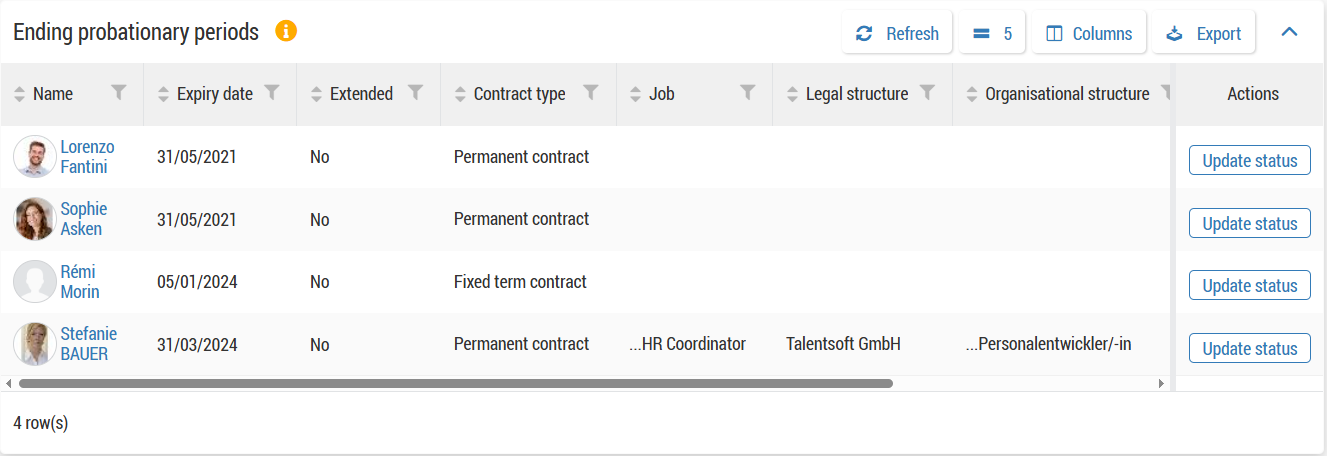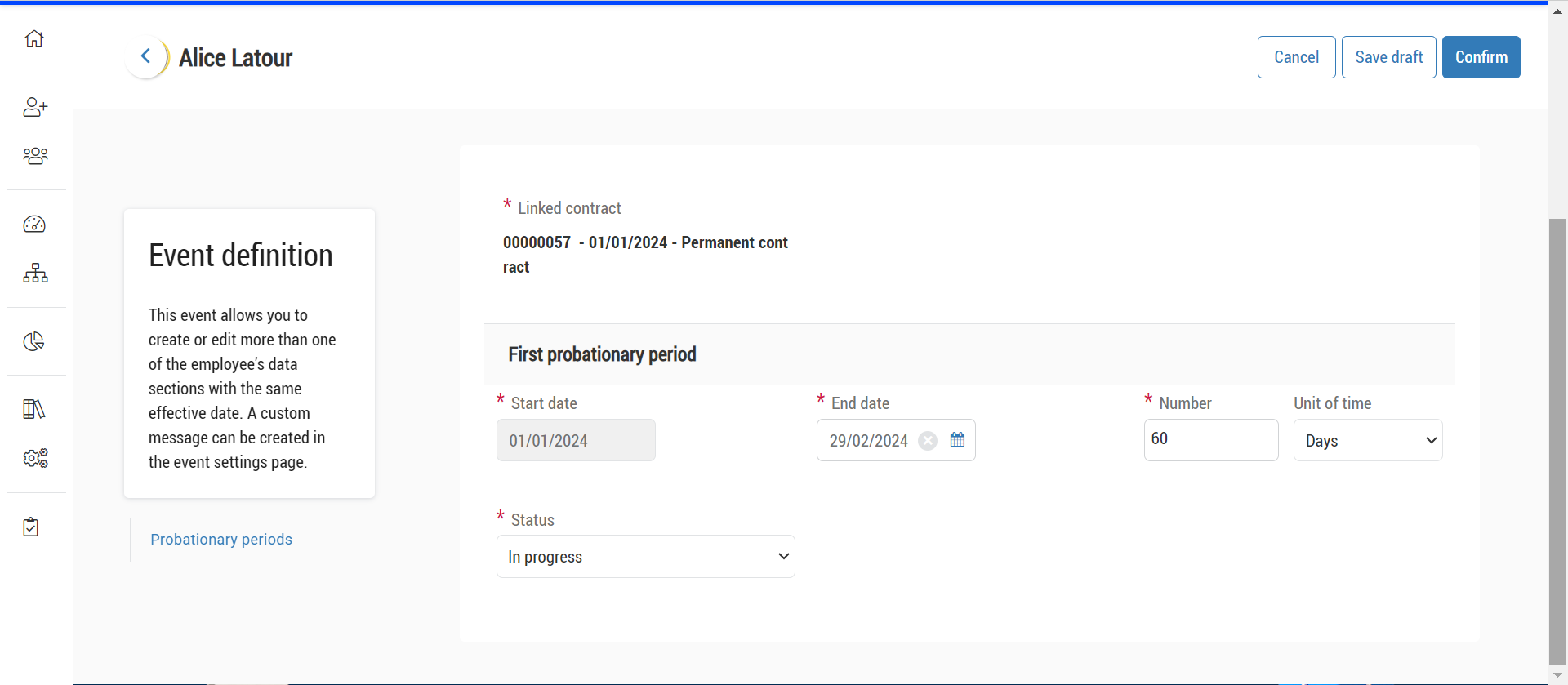The Probationary periods tab
Each tab is composed the same way: the list of tables on the left and the tables on the right.
Follow-up tables have common characteristics:
their display can be customised;
they display employees depending on the authorisations and role of the user, as long as the setting made by your administrator;
some tables display data depending on specific criteria: hover the
 icon below a follow-up table to see these criteria;
icon below a follow-up table to see these criteria;the majority of tables have an Actions column, allowing you to do one or more actions.
In each table, the number of rows per page in the follow-up table, and the order and appearance of columns are modifiable to create a custom view for the logged-in user.
To choose the number of lines of each table:
Click on the
 icon on the top of the table.
icon on the top of the table.Select the number of line per page.
The table update is immediate and is saved for your next log-in.
To configure displayed columns, click on Columns on the top of a table:
Click
 to pin a column to the left side of the follow-up table.
to pin a column to the left side of the follow-up table.Click
 , or the name of a column, to select it for repositioning it in the list by drag and drop.
, or the name of a column, to select it for repositioning it in the list by drag and drop.Click
 to hide a column from the follow-up table.
to hide a column from the follow-up table.The icon displays with a strike through bar
 and the column name moves to the bottom of the list.
and the column name moves to the bottom of the list.Also, a
 means that the column is locked in display mode by either your Administrator or Cegid HR and cannot be hidden.
means that the column is locked in display mode by either your Administrator or Cegid HR and cannot be hidden.
Click Apply to save your new configuration.
On all follow-up tables, a button Export is available at the top right.
This button allows you to export table data in CSV format according to the following rules:
The exported data is that displayed in the follow-up table: the user's authorizations and rights are taken into account.
The column display settings (visibility and order) are retained.
The export format respects the culture parameters of the user who starts the export (separator in comma or semicolon format and language of the column headers).
The name of the exported file is in a default format: Export_[Followuptablename]_[YYYYMMDD][hhmmss].
This tab contains the follow-up tables you use to take actions on employee probationary periods.
This table displays employees and their probationary periods depending on:
the period status;
the end date of the period.
Display criteria that have been added by your administrator are visible by hovering the icon  . Please note: for an employee to appear in the table, the Group start date field in the Key dates data section must be filled in.
. Please note: for an employee to appear in the table, the Group start date field in the Key dates data section must be filled in.
From this table, you have the name of the employee and information about his contract and the relevant probationary period.
If an employee has several probationary periods coming to an end, his name appears several times.
From this table, you can click on Update status in the Actions column to rule the relevant probationary period.

This table displays employees and their internal probationary periods depending on:
the period status;
the end date of the period.
Display criteria that have been added by your administrator are visible by hovering the icon  . Please note: for an employee to appear in the table, the Group start date field in the Key dates data section must be filled in.
. Please note: for an employee to appear in the table, the Group start date field in the Key dates data section must be filled in.
From this table, you have the name of the employee and information about his contract and the relevant internal probationary period.
If an employee has several internal probationary periods coming to an end, his name appears several times.
From this table, you can click on Update status in the Actions column to rule the relevant internal probationary period.

Probationary and internal probationary periods are entered directly in the employee file and are linked to a contract.
They are created when a new employee is recruited to a team (probationary period) or when an employee already working for the company joins another team (internal probationary period).
These two events are used to determine the period shortly before the end date.
To start these events, you need to use the Ending probationary periods or Ending internal probationary periods dashboards, accessible from the Probationary periods tab on the homepage.
Both events start in the same way, from their respective dashboards:
In the Actions column, click Update status.
The information for the period appears.
Fill in all mandatory fields.
Modify the status of the period by selecting an option for the Status field.
In progress: the information does not need to be changed.
Approved: the period is validated as it stands, modify the End date field if necessary.
Inconclusive: the period is not validated and is closed on the initial end date.
Shortened: the period is validated, and you can change the End date field if required.
Extended: fill in the information for the second period in the section that appears.
In the top right-hand corner, click Confirm to save your changes.
